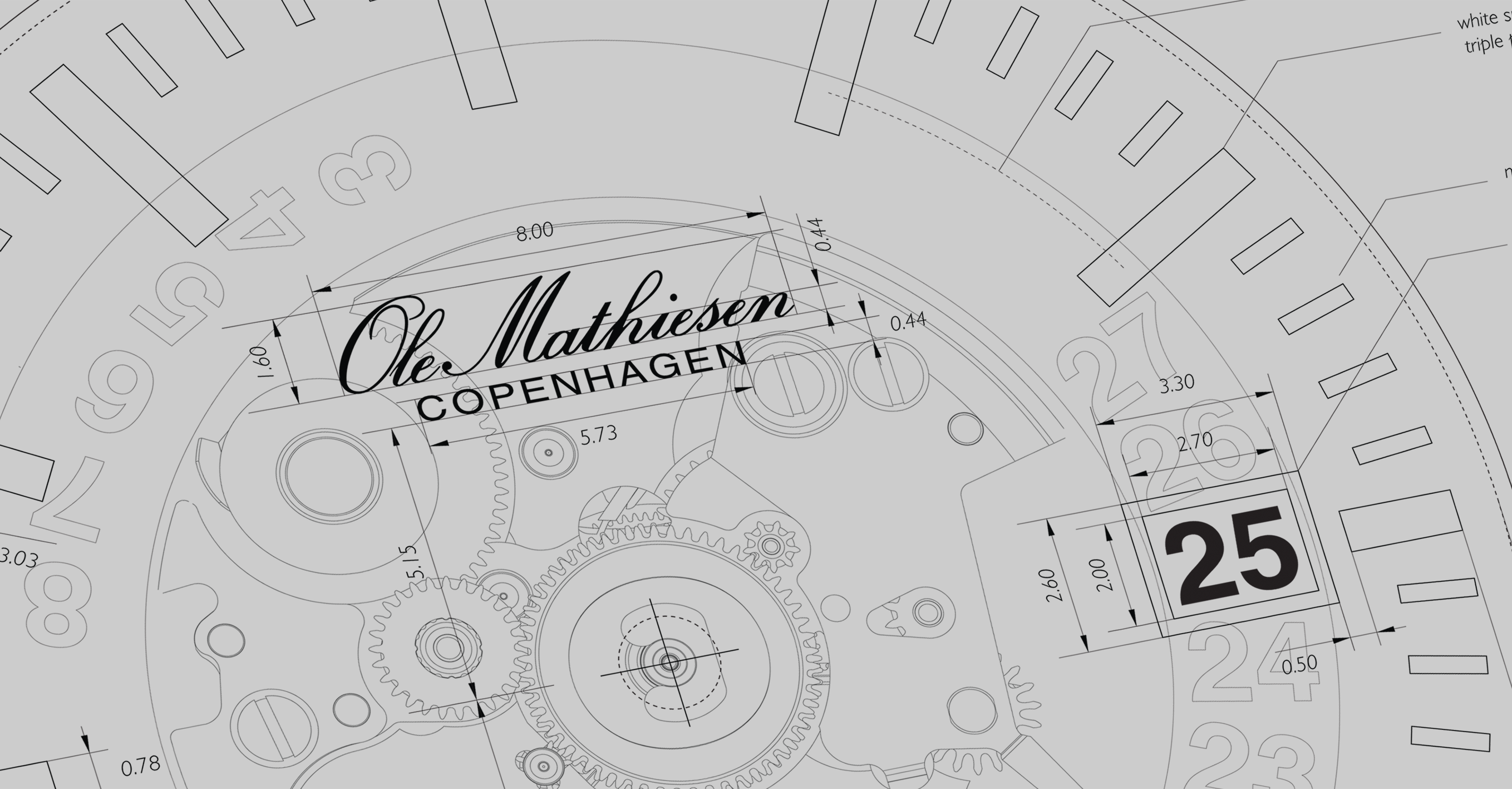

Designing a classic
What went on during the design process when Ole Mathiesen created the classic from 1962? – “My father was a watchmaker, so he did not actually sketch the watches, but explained what he wanted to a Swiss manufacturer, and who assembled 20 watches based on his specifications and sent them to him. Then he had some corrections, and the next time he placed an order, he added the corrections. So the model we have now is the final result of that process.”
How would you characterize the design of the classic OM? – “My father’s idea was to make a simple, harmonious, classic steel watch that more people could afford to purchase. At the time, that was a new concept. It is very Danish – both the idea behind the watch, and also its clean, simple expression.”
When did you design your first watch? – “In the late 1990s. I am a qualified architect, and at that time I had my own practice together with some friends. Then whenever there was an architectural or graphic assignment for the company, I was allowed to execute it. But in 1997 I started to become more engaged with the firm. One of my suggestions was that we make the first magazine about watches, which was something that didn’t exist at that time. That was also the time when I designed my first watch. I presented a draft sketch, just as if it had been for any other customer. At that time we only had very thin, classic watches in our collection, so my first suggestion was a sports watch. We decided to call it OMS, short for Ole Mathiesen Sport, but it is definitely not sporty!”
How is your background as an architect significant? – “Before I started working for my father, I had a totally different view of what designing a watch involved. I looked at it just like any other industrial product. I no longer view it in that way. Yes, you can get far with drawings and sketches during the design process, but even the slightest things change its character. At the same time, a watch has to function while worn around a wrist, and that means that not everything can be solved on a computer.”
What do you emphasize in the development of the new watches? – “I have gone deeper and deeper into studying the basic characteristics that make up our family tradition. It has to do with simplicity, purity, and the quality of the details, and the grade of the materials. We have an honest approach to the materials. And it also has to do with our values. I think that is why many people are attracted to our watches today, because they represent a good, healthy set of values.”
What is the design process like these days? – “It has always been essential for us, especially for my father, that the watches should be beautiful on the inside, when the watchmakers open them. Because when you have a public narrative, it can’t be the opposite of the story that you tell internally. For many years, roughly from the 1960s to the 1980s, the end users could not care less, but that has changed. So designing a watch is also a question of what kind of watch work you would like to have inside. This is why our workshop is a very important part of our new development. It can be challenging, because half a millimeter, or even a tenth of a millimeter, can make all the difference. We spend time on things that are not visible to the naked eye, and that is why the watches are also a bit more expensive.”
Which details are important? – “In all of our watches, the dials under the glass are arched. That was something that was done in the old days in order to be able to make the watch thinner and to gain space. Today there is no real reason to do so, other than that it looks beautiful. It is not something that is easily noticed, but if you place it next to a similar watch with a flat dial you can see the difference. The arched dial gives a nice depth. These are the kinds of details that make all the difference.”
In response to the question of what is important in relation to the final expression of a watch, Christian Mathiesen answers: “It’s the simplicity. The watch shouldn’t steal the limelight. It shouldn’t be the watch that comes with a human accessory; instead, it should respond to its user. The watch sends a signal that indicates the qualities that are important to the person bearing it.”